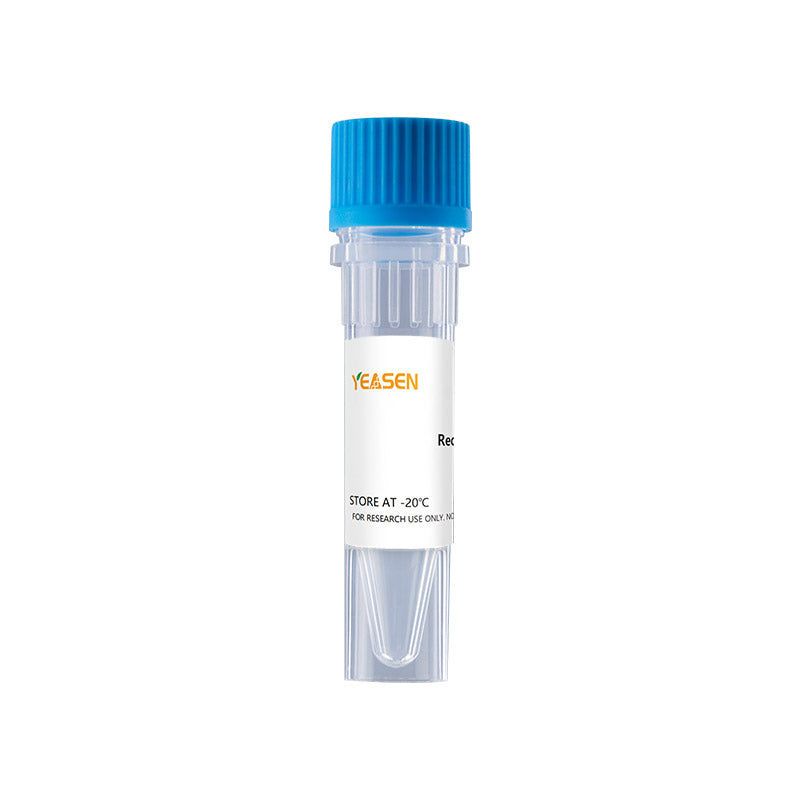Description
Dickkopf related protein 1 (Dkk-1) is the founding member of the Dickkopf family of proteins that includes Dkk-1, -2, -3, -4, and a related protein, Soggy. Dkk proteins are secreted proteins that contain two conserved cysteine-rich domains separated by a linker region. Each domain contains ten cysteine residues . Mature human Dkk-1 is a 40 kDa glycosylated protein that shares 86%, 87%, 90% and 91% aa sequence identity with mouse, rat, rabbit and bovine Dkk-1, respectively. It also shares 42% and 36% aa identity with human Dkk-2 and Dkk-4, respectively. Dkk-1 and Dkk-4 are well documented antagonists of the canonical Wnt signaling pathway. This pathway is activated by Wnt engagement of a receptor complex composed of the Frizzled proteins and one of two low-density lipoprotein receptor-related proteins, LRP5 or LRP6 . Dkk-1 antagonizes Wnt by forming ternary complexes of LRP5/6 with Kremen1 or Kremen2. Dkk1/LRP6/Krm2 complex internalization has been shown to down-regulate Wnt signaling. Dkk-1 is expressed throughout development and antagonizes Wnt-7a during limb development. Other sites of expression include developing neurons, hair follicles and the retina of the eye .
Product Properties
|
Synonyms |
Dickkopf-1;DKK-1;SK Protein; DKK1; dkk1; dkk-1 |
|
Accession |
O94907 |
|
Source |
HEK293 Cells-derived human Dkk-1 protein, Met2-His 266 with His tag at the C-terminus. |
|
Molecular Weight |
Approximately 27.2 kDa. In SDS-PAGE under reducing conditions, the apparent molecular mass of rh DKK1 is approximately 42.9 kDa due to glycosylation. |
|
AA Sequence |
MALGAAGAT RVFVAMVAAA LGGHPLLGVS ATLNSVLNSN AIKNLPPPLG GAAGHPGSAV SAAPGILYPG GNKYQTIDNY QPYPCAEDEE CGTDEYCASP TRGGDAGVQI CLACRKRRKR CMRHAMCCPG NYCKNGICVS SDQNHFRGEI EETITESFGN DHSTLDGYSR RTTLSSKMYH TKGQEGSVCL RSSDCASGLC CARHFWSKIC KPVLKEGQVC TKHRRKGSHG LEIFQRCYCG EGLSCRIQKD HHQASNSSRL HTCQRH |
|
Tag |
His |
|
Physical Appearance |
Sterile Filtered White lyophilized (freeze-dried) powder. |
|
Purity |
> 90% by SDS-PAGE. |
|
Biological Activity |
Measured by its ability to inhibit Wnt3a-induced alkaline phosphatase production by C3H10T1/2 cells. The ED50 for this effect is approximately 0.1-0.4 μg/mL in the presence of 10 ng/mL of mouse Wnt3a. |
|
Endotoxin |
< 1.0 EU per 1μg of the protein by the LAL method. |
|
Formulation |
Lyophilized from a 0.2 μm filtered concentrated solution in PBS, pH 7.4. |
|
Reconstitution |
We recommend that this vial be briefly centrifuged prior to opening to bring the contents to the bottom. Reconstitute in sterile distilled water or aqueous buffer containing 0.1% BSA to a concentration of 0.1-1.0 mg/mL. Stock solutions should be apportioned into working aliquots and stored at ≤ -20°C. Further dilutions should be made in appropriate buffered solutions. |
Shipping and Storage
The products are shipped with ice pack and can be stored at -20℃ to -80℃ for 1 year.
Recommend to aliquot the protein into smaller quantities when first used and avoid repeated freeze-thaw cycles.
Cautions
1. Avoid repeated freeze-thaw cycles.
2. For your safety and health, please wear lab coats and disposable gloves for operation.
3. For research use only.
Payment & Security
Your payment information is processed securely. We do not store credit card details nor have access to your credit card information.
Inquiry
You may also like
FAQ
The product is for research purposes only and is not intended for therapeutic or diagnostic use in humans or animals. Products and content are protected by patents, trademarks, and copyrights owned by Yeasen Biotechnology. Trademark symbols indicate the country of origin, not necessarily registration in all regions.
Certain applications may require additional third-party intellectual property rights.
Yeasen is dedicated to ethical science, believing our research should address critical questions while ensuring safety and ethical standards.

